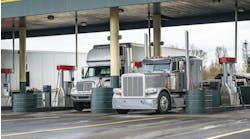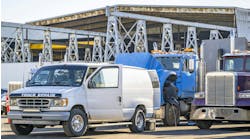We all will remember the winter of 2022-2023. Snow fell in sunny Southern California. Yosemite National Park recorded 15 feet of the white stuff. Storms labeled “atmospheric rivers” pummeled large portions of the country. Tornadoes hit the South and Midwest.
At long last, we are feeling warmer temperatures! Can we relax? No. Melting snows are now adding water to rapidly filling streams and rivers. Those waterways often are already full from heavy winter rains that fall on frozen ground and are not absorbed by the soil. And in many parts of the country, hurricane season, which runs June 1 to Nov. 30, is just around the corner with its torrential downpours.
Rising river levels mean the potential for flooded roads nearby. Hurricanes mean large swaths of streets and highways may be closed by water, debris, and downed power lines. Seasons build on one another. The severe summer drought experienced last year by many regions created a recipe for forest fires in the fall. This year the conditions are ripe for flooding.
See also: 'Penalty flags' are flying at FMCSA
There is a familiar saying: “It is better to light a candle than to curse the darkness.” We can rail against the challenges brought by severe weather—or we can light a candle and get ready for operating in demanding conditions.
That readiness comes in three steps:
1. Preparation. Every truck driver should review the day’s route for road closures. Every dispatcher should have immediate access to state road reports. Driver and dispatcher should communicate their findings.
2. Awareness. Flooding can happen quickly, before being officially reported by the state highway department. Truck drivers must be aware when operating along valley roads near rivers, along coastlines, or when entering the canyons of recently snow-capped mountains. A little standing water in the road ahead may signal fully flooded conditions further on. A call back to the dispatcher can agree on an alternate route if needed—and help other truck drivers in their preparation.
3. Caution. It is true that a commercial motor vehicle may be able to plow through depths of water that would stop a passenger car in its tracks. But flooded roads can also cover dangerous conditions—missing chunks of pavement, felled tree limbs, or even a washed-out bridge—so don’t take a chance. Flooding is a flashing neon warning sign: stop and assess. Truck drivers should pull safely off the road and look the situation over. If highway workers or emergency personnel are present, all drivers should follow their directions.
It’s not just meteorologists who are concerned about flooding this year. Barge operators on the Mississippi River have noted that rising water levels are obscuring the river banks and locations for safe mooring. Farmers are unable to begin spring planting due to flooded fields. Trucking fleet managers should heed the signs and advise the three steps for safe operation when flooded roads are possible: preparation, awareness, and caution.
Steve Vaughn is senior vice president of field operations at PrePass Safety Alliance, the provider of PrePass weigh station bypass and electronic toll-payment and management services. Vaughn served nearly three decades with the California Highway Patrol and is a past president of the Commercial Vehicle Safety Alliance.



